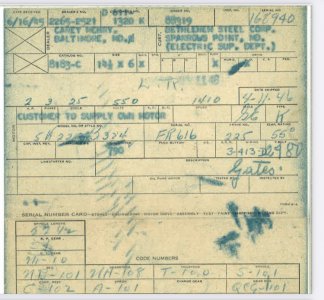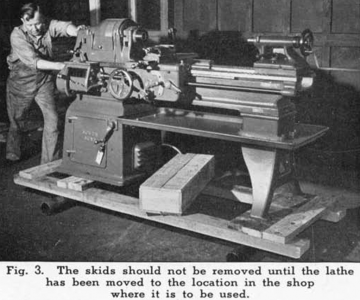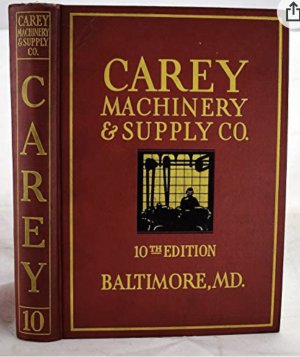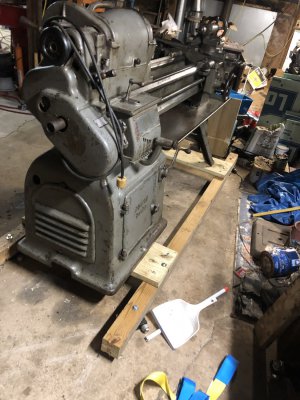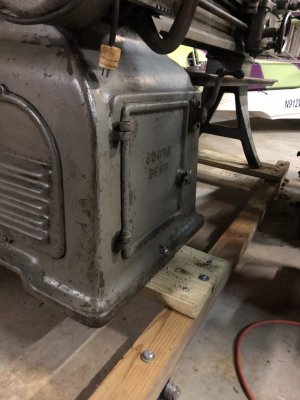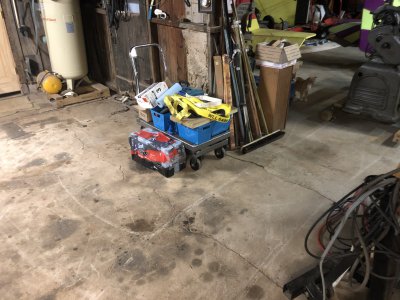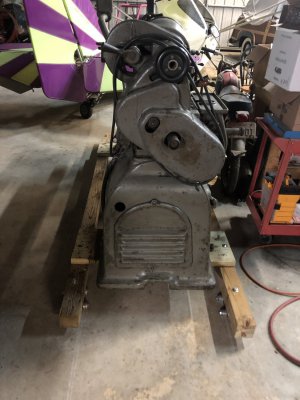I’m not taking stuff off other than the chucks, which I’ve already moved. I’ll slide the carriage down to the tailstock and lock it there (the carriage clamp that just arrived is the correct part for the 14-1/2). I’ll probably run the micrometer stop down there as a secondary lock. That will help balance the lathe lengthwise.
I have reserved a trailer with a 7000 lb gross weight and a tilting bed. The trailer is the full legal width and 16 feet long—I think it would be hard for the lathe to turn it over except in a crash, in which case I’ll have other problems. My rigging straps are rated at 8000 pounds working load. I’ll screw stops down to the trailer bed to keep it from sliding.
I will be building a pallet similar to the one South Bend used originally—2/12s mounted across two 4x4s. The anchor holes will rest on the 2/12s, which extend front to back of the lathe. The 4x4s run the length of the lathe. The lathe will be bolted down using half-inch lag bolts—same as what SB used in their crates. I’ll use machine skates under the 4/4s, held from slipping with half inch bolts through the 4/4s and into the skates.
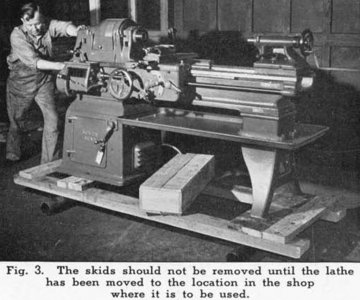
The pallet will prevent sudden lateral loads on one of the tail legs, and will provide a bumper.
Once in position with floor stops screwed down, I’ll pull it down using the ratchet straps. Like I said, these are big—I use them for tying down tractors.
Distance is about 40 miles. Move is planned for Thanksgiving weekend, when I can get the trailer for fives days for the one-day price.
It’s certainly not the first top-heavy load I have rigged.
Rick “listening to advice carefully” Denney
I have reserved a trailer with a 7000 lb gross weight and a tilting bed. The trailer is the full legal width and 16 feet long—I think it would be hard for the lathe to turn it over except in a crash, in which case I’ll have other problems. My rigging straps are rated at 8000 pounds working load. I’ll screw stops down to the trailer bed to keep it from sliding.
I will be building a pallet similar to the one South Bend used originally—2/12s mounted across two 4x4s. The anchor holes will rest on the 2/12s, which extend front to back of the lathe. The 4x4s run the length of the lathe. The lathe will be bolted down using half-inch lag bolts—same as what SB used in their crates. I’ll use machine skates under the 4/4s, held from slipping with half inch bolts through the 4/4s and into the skates.

The pallet will prevent sudden lateral loads on one of the tail legs, and will provide a bumper.
Once in position with floor stops screwed down, I’ll pull it down using the ratchet straps. Like I said, these are big—I use them for tying down tractors.
Distance is about 40 miles. Move is planned for Thanksgiving weekend, when I can get the trailer for fives days for the one-day price.
It’s certainly not the first top-heavy load I have rigged.
Rick “listening to advice carefully” Denney
Last edited:


